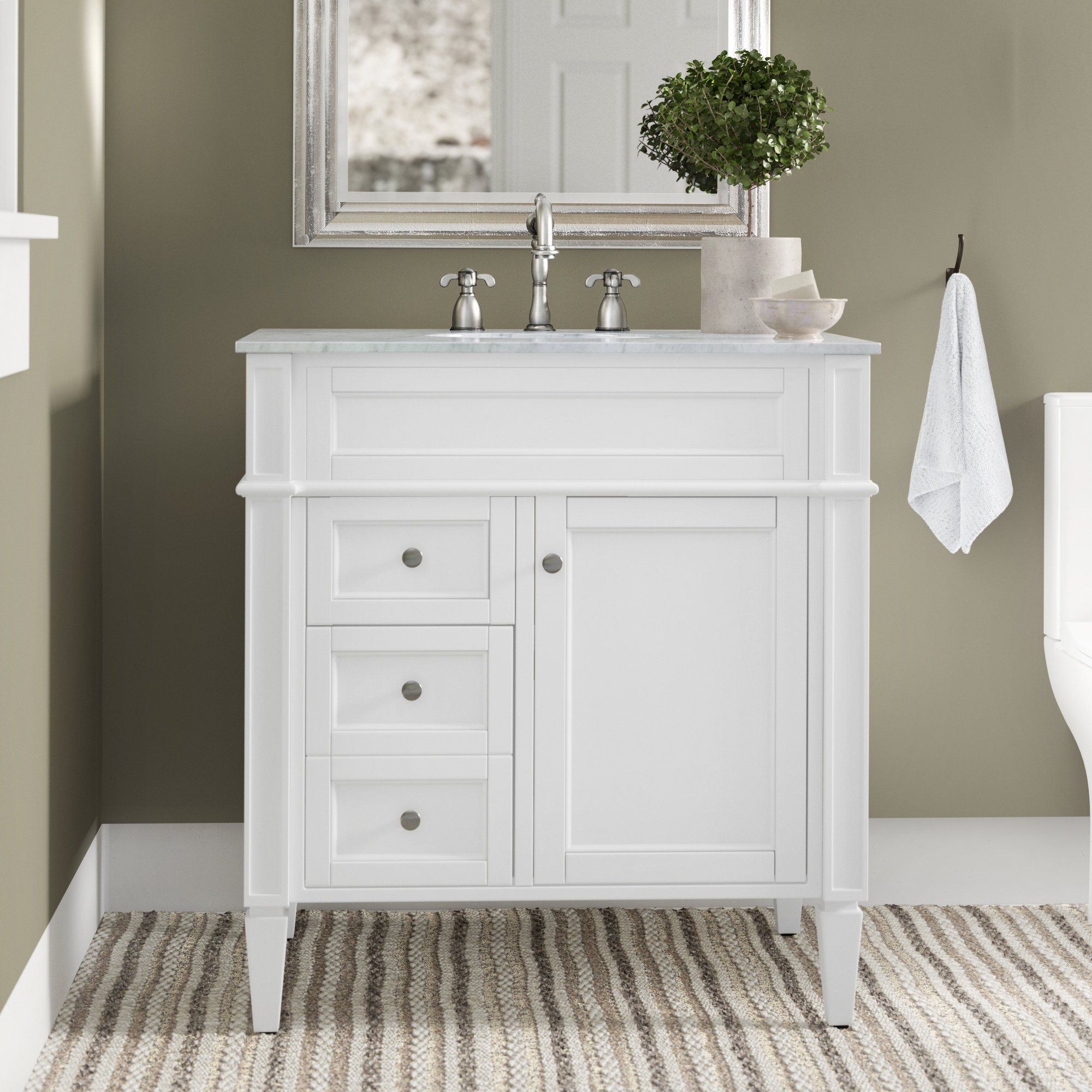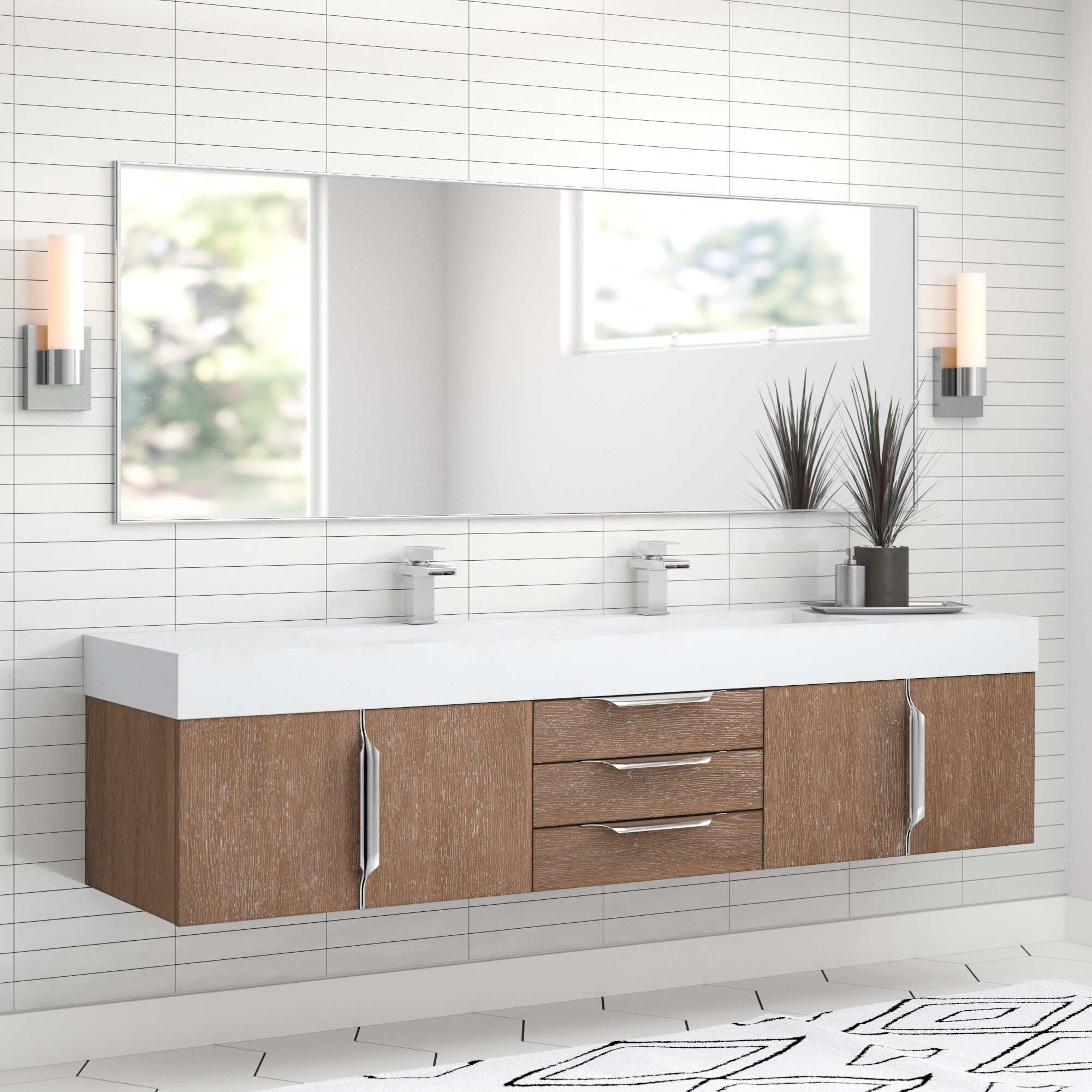Floating Concrete Bathroom Vanity Design and Construction

Floating concrete bathroom vanities offer a unique and modern aesthetic, adding a touch of industrial chic to any bathroom. They are durable, water-resistant, and can be customized to suit various design preferences.
Advantages and Disadvantages of Using Concrete for Bathroom Vanities, Floating concrete bathroom vanity
Using concrete for bathroom vanities presents both advantages and disadvantages that should be considered.
- Advantages: Concrete is a durable and long-lasting material, resistant to scratches, stains, and moisture. It offers a unique and modern aesthetic, adding a touch of industrial chic to any bathroom. Concrete can be customized in various shapes, sizes, and finishes, allowing for unique and personalized designs.
- Disadvantages: Concrete is a heavy material, requiring careful planning and installation. It can be challenging to work with, requiring specific skills and tools. Concrete is porous, requiring a sealant to prevent water damage and staining.
Step-by-Step Guide for Constructing a Floating Concrete Bathroom Vanity
Constructing a floating concrete bathroom vanity involves a series of steps, ensuring a sturdy and functional piece.
- Design and Planning: Determine the desired dimensions, shape, and design features of the vanity. Create a detailed plan, including measurements, material requirements, and construction steps.
- Mold Creation: Construct a mold using plywood or MDF, ensuring it is sealed and waterproof. The mold should be slightly larger than the desired vanity dimensions to allow for shrinkage and finishing.
- Concrete Mixing and Pouring: Mix concrete according to the manufacturer’s instructions, ensuring a smooth and consistent mixture. Pour the concrete into the mold, vibrating it to remove air bubbles and ensure even distribution.
- Curing and Finishing: Allow the concrete to cure for at least 24 hours, covering it with plastic to maintain moisture. After curing, remove the mold and sand the surface to achieve the desired finish.
- Sealing and Waterproofing: Apply a sealant to the concrete surface, protecting it from water damage and staining.
- Installation: Install the vanity to the wall using appropriate mounting hardware, ensuring it is securely attached.
- Sink and Faucet Installation: Install the sink and faucet according to the manufacturer’s instructions, ensuring proper sealing and drainage.
Design Options for Floating Concrete Vanities
Floating concrete vanities offer a wide range of design possibilities, allowing for unique and personalized expressions.
- Shape: Concrete can be molded into various shapes, from simple rectangular designs to more intricate curves and angles.
- Size: The size of the vanity can be customized to suit the available space and storage needs.
- Finish: Concrete can be finished in various ways, including polished, stained, or painted, allowing for different aesthetics and textures.
Tools and Materials for Constructing a Floating Concrete Vanity
Constructing a floating concrete vanity requires specific tools and materials to ensure a successful project.
- Tools: Measuring tape, saw, drill, sander, mixing tools, trowel, vibrating tool, safety glasses, gloves, respirator.
- Materials: Concrete mix, plywood or MDF, sealant, paint or stain, mounting hardware, sink, faucet, plumbing supplies.
Floating Concrete Vanity with Integrated Storage Solutions
Floating concrete vanities can be designed with integrated storage solutions, maximizing space and functionality.
- Drawers: Drawers can be incorporated into the vanity design, providing storage for toiletries and other bathroom essentials.
- Shelves: Open shelves can be integrated into the vanity design, offering a convenient space for displaying decorative items or storing towels.
Floating Concrete Bathroom Vanity Installation
Installing a floating concrete bathroom vanity requires careful planning and execution to ensure a secure and functional fixture. The process involves attaching the vanity to the wall using appropriate hardware, making necessary plumbing and electrical connections, and finally, installing the countertop.
Securing the Vanity to the Wall
Before installing the vanity, it is crucial to ensure that the wall is strong enough to support its weight. Concrete walls are typically strong, but drywall walls may require additional support. To secure the vanity to the wall, you will need heavy-duty anchors and screws designed for concrete or drywall. For concrete walls, use a drill with a hammer setting to create pilot holes for the anchors. For drywall, use drywall anchors designed to distribute the weight across a larger area. Once the anchors are installed, attach the vanity to the wall using the provided screws. Ensure that the screws are long enough to secure the vanity to the wall and that they are installed at a consistent depth.
Plumbing and Electrical Connections
The next step is to connect the plumbing and electrical lines to the vanity. For plumbing, you will need to connect the drain and water supply lines. It is recommended to use flexible PEX or copper tubing for these connections, as they are easier to work with and more adaptable to changes in the installation. For electrical connections, ensure that the wiring is properly routed and secured to the wall. Use junction boxes to connect the electrical wires to the vanity’s electrical components. Remember to always turn off the power supply before working on electrical connections.
Installing the Countertop
Once the vanity is securely attached to the wall and the plumbing and electrical connections are made, you can install the countertop. The countertop can be made of various materials, such as stone, tile, or even concrete. For a concrete countertop, you can use a pre-made countertop or create your own. To install the countertop, ensure it is properly supported by the vanity base. Use a sealant to prevent water damage and secure the countertop using appropriate fasteners.
Safety Precautions
Installing a floating concrete vanity requires careful planning and execution to ensure a safe and successful installation. Here are some essential safety precautions to take during the installation process:
- Always wear safety glasses and gloves when working with tools and materials.
- Be cautious when working with heavy objects and use lifting aids when necessary.
- Turn off the power supply before working on electrical connections.
- Use caution when working with sharp objects and tools.
- Follow the manufacturer’s instructions for installing the vanity and countertop.
Floating Concrete Bathroom Vanity Styles and Trends

Floating concrete bathroom vanities have become increasingly popular in recent years, adding a touch of modern elegance and durability to bathroom spaces. Their sleek, minimalist design and versatility in style make them a perfect choice for a wide range of bathroom aesthetics.
Modern and Minimalist Floating Concrete Vanities
Modern and minimalist floating concrete vanities are characterized by clean lines, simple forms, and a focus on functionality. They often feature a sleek, rectangular or square design with a smooth, polished concrete finish. The lack of visible legs or supports creates a sense of lightness and airiness, enhancing the overall spaciousness of the bathroom. These vanities are typically paired with contemporary bathroom fixtures and accessories, such as chrome faucets, sleek mirrors, and minimalist lighting.
Industrial Floating Concrete Vanities
Industrial floating concrete vanities embrace a raw, exposed aesthetic, reflecting the industrial design movement. They often feature unfinished or distressed concrete finishes, showcasing the natural texture and imperfections of the material. Metal accents, such as exposed pipes or iron hardware, are commonly incorporated to enhance the industrial feel. Industrial floating concrete vanities pair well with rustic or vintage bathroom elements, such as reclaimed wood accents, exposed brick walls, and Edison bulb lighting.
Rustic Floating Concrete Vanities
Rustic floating concrete vanities blend the ruggedness of concrete with the warmth and natural beauty of wood. They often feature a combination of concrete and reclaimed wood elements, creating a unique and inviting aesthetic. The concrete base can be left unfinished or treated with a natural oil or stain to enhance its rustic appeal. Rustic floating concrete vanities are often paired with traditional bathroom fixtures and accessories, such as antique-style faucets, wrought iron hardware, and natural fiber rugs.
Floating Concrete Vanities Integrated with Different Bathroom Design Themes
Floating concrete vanities can be seamlessly integrated with a variety of bathroom design themes. For example, a modern floating concrete vanity with a sleek, polished finish would complement a contemporary bathroom with chrome fixtures and minimalist decor. A rustic floating concrete vanity with a distressed finish and wood accents would be a perfect fit for a farmhouse-style bathroom with reclaimed wood elements and vintage-inspired fixtures. An industrial floating concrete vanity with exposed pipes and metal accents would enhance a loft-style bathroom with exposed brick walls and Edison bulb lighting.
Visual Representation of a Floating Concrete Vanity
Imagine a floating concrete bathroom vanity with a sleek, rectangular design and a smooth, polished finish. The vanity top is made of natural stone, such as marble or granite, with a contrasting vein pattern that adds visual interest. The vanity is supported by two slender metal legs, creating a sense of lightness and airiness. The overall design is minimalist and modern, with clean lines and a focus on functionality. The vanity is paired with a chrome faucet, a sleek rectangular mirror, and minimalist lighting.
Impact of Finishes and Materials on the Overall Aesthetic
The finish and materials used for a floating concrete bathroom vanity have a significant impact on its overall aesthetic. A polished concrete finish creates a sleek and modern look, while an unfinished or distressed finish offers a more rustic or industrial appeal. Natural stone countertops, such as marble or granite, add a touch of elegance and sophistication. Reclaimed wood accents can create a warm and inviting atmosphere. Metal accents, such as exposed pipes or iron hardware, enhance the industrial feel.
